Henri de Toulouse-Lautrec Biography
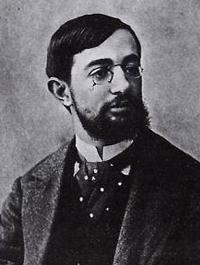
Henri de Toulouse Lautrec (1864-1901) was a French artist of the late 19th Century, most closely associated with the Symbolists, but with a unique, distinctive style of his own. His depictions of Parisian night life and society -- vivid, candid, energetic and unflattering -- are instantly recognizable, and typify that place and period in the minds of many. The painter's own life has become a legend that has inspired many romanticized interpretations.
Henri-Marie Raymond de Toulouse-Lautrec-Montfa was born on November 24, 1864, in the town of Albi, in the south of France. He was the first child and heir of Alphonse Charlers Jean Marie (1838-1913), Count of Toulouse, and his wife Marie Marquette Zoe Adele Tapie de Celeyran (1841-1930). Count Alphonse de Toulouse-Lautrec was an avid sportsman and hunter, with a penchant for flamboyant outfits. Marie de Celeyran, by contrast, was very reserved and shy, and doted on her first child. Young Henri was probably first introduced to painting through his uncles, several of whom were amateur artists. He received his first tutelage in art from Rene Princeteau, a well-known sports-painter and a friend of his father's.
Much of Henri's early childhood was spent in the Chateau de Celeyran, his mother's familial home, near the Mediterranean town of Narbonne, where he spent much time drawing and painting the life and landscape of the estate. In 1868, his parents separated; Henri would live mostly with his mother. In 1872, he was enrolled in the prestigious Lycee Fontanes in Paris, but he left the school only three short years later, in 1875, due to health reasons. Together with his mother, he moved back to the south of France, and its gentler climate.
In 1878, Henri broke his left thigh as he was getting up out of a chair. Bed-ridden, he spent his time reading, drawing and painting. A year later and just barely recovered from his first injury, he broke his other thigh whilst taking a walk with his mother. The growth of his legs was stunted forever, and he never grew taller than 5 feet. There is much speculation about the causes of the painter's medical condition. From the evidence we have today, it is probable that he suffered from brittle bone disease (osteogenesis imperfecta), a genetic disorder that prevents bones and connective tissues from developing properly. Osteogenesis imperfecta was not uncommon among the European aristocracy, and this would explain Henri's physical frailty and other symptoms. Be that as it may, his illness was never identified during his lifetime, and nothing his mother and his doctors undertook would help.
Meanwhile, Henri continued to pursue art. By 1880, he had produced as many as two and a half thousand works, in a variety of techniques. Encouraged by his uncle Charles and by Princeteau, he eventually managed to convince his mother to allow him to return to Paris to study art. In 1881, Henri de Toulouse-Lautrec set up residence in Princeteau's Paris studio.
In 1882, the young artist was accepted into the studio of the famous painter and art teacher Leon Bonnat. However, Bonnat took an immediate dislike to Toulouse-Lautrec, who, already then, had something of a caustic personality. The two did not get along well, and after Bonnat became a professor at the Paris Academy of Art, Lautrec quit his studio and began to study, instead, under Fernand Cormon. Cormon was a talented artist in his own right, and an enthusiastic teacher, and his workshop attracted many young painters who would later be among the shapers of the art world.
Under Cormon, Toulouse-Lautrec explored many styles and techniques. He received a firm grounding in academic painting, but Cormon also encouraged his students to explore Impressionism and contemporary directions in art. Two of the painter's works from this period are the Artist's Mother (1883) and the Young Routy at Celeyran (1883).
In 1883, Lautrec had his first romantic liaison with Marie Charlet, a 17-year-old model. The painter would have many affairs over the course of his rather brief life. All of them would be with women far below his station, and none of them were very long-lasting. Although the artist immersed himself in the life of the lower classes -- the cabarets, the dance halls and the brothels -- he always retained an aristocratic aloofness and a sense of his own superiority. He was not attempting to become part of that life: he was rather an unprejudiced observer; a doctor or a scientist, trying to dissect it and give it life, in his art.
Lautrec moved into the Montmartre district in 1884. Here, he met Edgar Degas, whom he came to admire. He soon began to frequent the district's cabarets, including the Elysee-Montmartre, the Moulin de la Galette and the Mirliton, run by Artistide Bruant, where he displayed his works. That year, he also had his first exhibition at the Pau.
In 1886, Lautrec met Vincent Van Gogh at Cormon's studio, where the Dutch painter had come to study. They quickly became friends, though Lautrec left the studio only a few months later, his education there concluded. This was also the year when he met Suzanne Valadon, who modelled for him, and they began a relationship. It didn't last long; two years later, Valadon attempted suicide and the couple broke up. See The Laundress, which is one of the artist's depiction of his mistress.
By this point, Lautrec's art was beginning to attract greater notice. In 1887, he participated in an exhibition in Toulouse, where he assumed a false name, in order to distance himself from his father, the Count of Toulouse. In Paris, he exhibited together with Van Gogh. He was invited to send some of his work to the les Vingt ("The Twenty") exhibition, taking place early in 1888, in Brussels. At the same exhibition, two years later, Lautrec had a fierce argument with the painter Henry de Groux over the inclusion of Van Gogh's work, and challenged the Belgian to a duel. The duel never took place, but it shows the friendship Lautrec and Van Gogh shared. Van Gogh stayed with Lautrec in Paris, not long before his suicide in 1890. See Toulouse-Lautrec's portrait of Vincent Van Gogh.
In 1889, Lautrec participated in the Salon des Independants for the first time. He would become a frequent contributor to the Salon's exhibitions. He spent the summer on France's Atlantic coast, yachting. This year saw the opening of the cabaret Moulin Rouge in the Montmartre; Lautrec immediately became a regular, and would often show his work at the establishment. In modern popular culture, the name Henri de Toulouse-Lautrec is inseparably linked to the Moulin Rouge, and it is true that some of his most iconic work was made there, including his notorious Moulin Rouge poster of 1891 (La Goulue), Valentin "the Boneless" Training the New Girls (1890), and others.
Though Lautrec is most famous for his depictions of Parisian night-life, he was a man of constantly-evolving interests, both artistically and otherwise. Around 1893, moved away from the cabarets and took an interest in literature and theater. He made his first engraving in 1891, and his later works include many lithographs, such as Les Ambassadeurs: Aristide Bruant (1892), May Milton (1895), The Jockey (1899), and others. In 1893, he took part in an exhibition devoted to painters and engravers. That year was important as well, because he had his first solo exhibition at the gallery of Maurice Joyant. In this, he was part of a modern trend for the celebration of individual artistic achievement. Prior to the late 19th Century, exhibitions had always been collective, featuring numerous artists.
Lautrec spent a lot of the time between 1894 and 1897 travelling. He visited London, Madrid and Toledo in Spain, Brussels, Haarlem and Amsterdam. In England, the painter became acquainted with Whistler and Oscar Wilde, both of whom he saw as role models -- the former for his art, the latter for his lifestyle. In Spain, he took inspiration from the old masters: Velasquez, Goya and El Greco. In Holland, he studied Rembrandt, Bruegel and Hals. In Brussels, in 1895 and again in 1897, he took part in exhibitions organized by the group La Libre Esthetique (The Free Aesthetic), the successors to les Vingt, where his work was exhibited side-by-side with that of Cezanne, Signac, Gauguin and Van Gogh.
His lifestyle, ever erratic, was becoming increasingly so as a result of his drinking, which was rapidly spiralling out of control. In 1894, on a whim, he moved into one of the brothels he frequented and lived there for some time. Some works painted from his experience there include Rue de Moulins (1894), Prostitutes Around a Dinner Table (1894), Two Friends (1894-95), In 1896, at a private exhibition in the gallery of Joyant, he got into altercation with no less a personage than the former King of Serbia, Milan Obrenovic, whom he called an ignorant "pig farmer". By this time, he was descending into outright alcoholism. In 1897, he had an attack of delirium tremens, while on summer vacation at Villeneuve-sur-Yonne. His artistic output decreased sharply, as most of his days were spent in various states of intoxication. His health deteriorated sharply. In 1899, he was confined to a mental hospital, attracting jabs from the press.
He died on September 9th, 1901, at the age of 36, at one of his beloved mother's homes in Malrome. His last two paintings were "Admiral Viaud" and "An Examination at the Faculty of Medicine".
Bibliography
Court Painter to the Wicked. The Life and Work of Toulouse-Lautrec by Jean Bouret. Harry N. Abrams, Inc. NY 1968
Toulouse_Lautrec. A Life. by Julia Frey Viking. 1994
Nightlife of Paris. The Art of Toulouse-Lautrec by Patrick O'Connor. Universe, NY.1991
Henri de Toulouse-Lautrec by Herhard Gruitrooy. 1996.
Toulouse-Lautrec by Philippe Huisman and M.G. Dortu. Chartwell Books, Inc.1971
Toulouse-Lautrec His Complete Lithographs and Drypoints by Jean Adhemar. Harry N.Abrams, Inc. NY
Toulouse-Lautrec: The Complete Graphic Works by Gotz Adriani. Thames & Hudson, 1988.
H. de Toulouse-Lautrec: One Hundred Ten Unpublished Drawings by Arthur William Heintzelman, Edouard Julien, M. Roland O. Heintzelman. French & European Pubns, 1955.
- Comtesse Adèle-Zoé De Toulouse-Lautrec, The Artist's Mother.
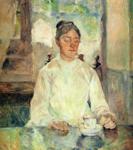
c.1883. Oil on canvas. 93.5 x 81 cm. Musée Toulouse-Lautrec, Albi, France.
- Le Jeune Routy / The Young Routy.
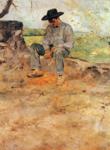
c.1883. Oil on canvas. 61 x 49 cm. Musée Toulouse-Lautrec, Albi, France.
- The Laundress.
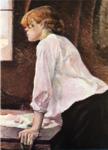
1889. Oil on canvas. 93 x 75 cm.
- Portrait Of Vincent Van Gogh.
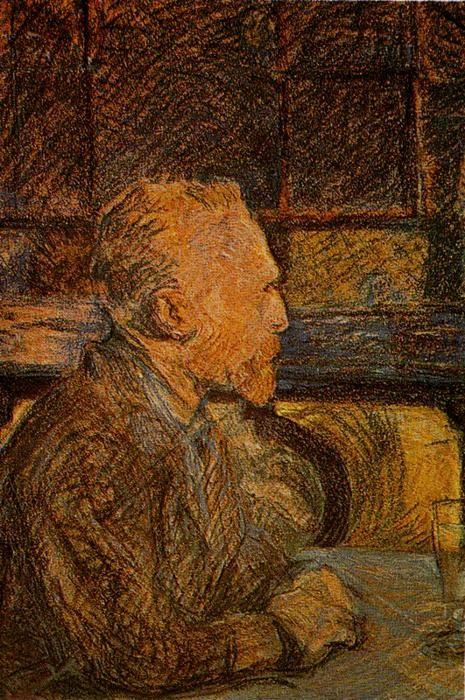
1887. Rijksmuseum Vincent van Gogh, Amsterdam, the Netherlands.
- Poster: Moulin Rouge - La Goulue.

1891. Lithograph. 192 x 122 cm. Musée Toulouse-Lautrec, Albi, France. Read Note.
- Dressage Des Nouvelles, Par Valentin Le Désossé / Training Of The New...
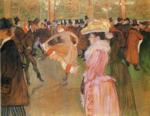
1889-90. Oil on canvas.115 x 150 cm. The Philadelphia Museum of Art, Philadelphia, PA, USA. Read Note.
- Les Ambassadeurs: Aristide Bruant.
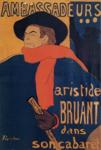
1892. Lithograph. 141.2 x 98.4 cm. Musée Toulouse-Lautrec, Albi, France. Read Note.
- May Milton.
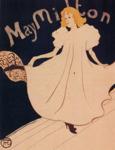
1895. Chalk lithograph. 81 x 64 cm. Free Library, Philadelphia, PA, USA.
- The Jockey.
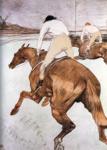
1899. Lithograph. 52 x 37 cm. Victoria & Albert Museum, London, UK.
- Oscar Wilde.
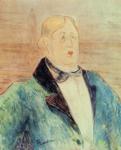
1895. Watercolor. 58.5 x 48 cm. Private collection. Read Note.
- Rue De Moulins Also Called: L'Inspection Médicale / The Medical Inspection.
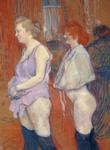
1894. Oil on cardboard on wood. 83.5 x 61.4 cm. The National Gallery of Art, Washington, DC, USA.